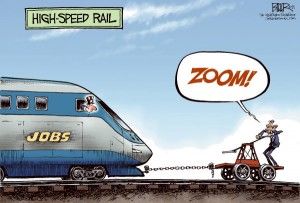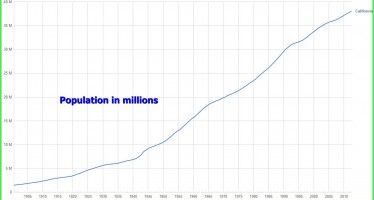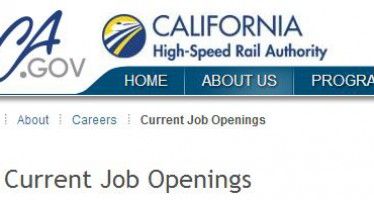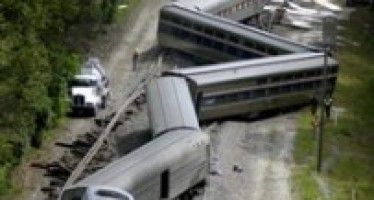Rail project begins grabbing CA farmers’ land

Jan. 18, 2013
By Katy Grimes
Before high-speed rail planners can do anything with the Central Valley route, they are looking at an estimated $360 million to buy out 356 privately-owned land parcels along the route.
According to a recent legal decision, holdouts will be bought out through courts, “whether they like it or not,” to use Lt. Gov. Gavin Newsom’s infamous 2008 statement on another matter.
Madera to Fresno
In July, the Legislature and Gov. Jerry Brown passed legislation to approve the first $6 billion segment of high-speed rail tracks. This first segment starts with a $1.5 billion leg from Madera to Fresno in the Central Valley.
During Assembly and Senate floor debates and speeches, Democrats repeatedly said, “This is our moment.” They talked of the significance of voting for the biggest infrastructure project in California history. And they blathered incessantly of their own importance in voting for the project.
Republican Assemblywoman Diane Harkey of Dana Point warned of dire economic circumstances. “Gov. Brown and many Sacramento Democrats seem unable to set priorities even though the state is bankrupt, boasts the lowest credit rating in the nation, must borrow $10 billion for short-term cash flow needs, while cutting public safety dollars and practicing ‘catch and release’ for state prisoners,” Harkey said. “We rank near the bottom of the 50 states in public education achievement and the Sacramento solution is to realign that function and implement trigger cuts IF voters don’t agree to raise taxes in November. But, billions in debt funding for one hundred miles of track with no train, no ridership and no cost analysis is still on the table.”
The Court
Despite being on the losing end of a recent Sacramento County Superior Court decision favoring High-Speed Rail over farmers, many Central Valley farmers still plan to fight to keep their land, rather than turn it over to the California High-Speed Rail Authority.
The farmers have consistently said the CHSRA did not thoroughly weigh the potential harms of the project, particularly as family farmers face losing hundreds of parcels of agricultural land to train tracks.
In the recent lawsuit, CHSRA claimed the potential harm to the state if the project was stopped was far greater than would be the damage to the Central Valley farmers. “The state could lose up to $3.2 billion in federal financing if the train does not meet deadlines, and could incur $8 million to $10 million in higher costs,” the AP reported.
The Central Valley grows 25 percent of America’s vegetables on just 1 percent of the farmland.
These farms have complex and expensive underground irrigation systems, wells and pumps, which farmers have invested in and built over many years. Farmers are worried that these could be ruined during the rail-construction project.
Farmers are also worried that the rail authority plan will cut large chunks of their land in half by the 100-foot wide train tracks, and present logistical problems getting to the other half of their properties. They’re also concerned that the tracks will bisect existing roads and affect important school bus routes.
On the chopping block
There are 356 parcels of land in the path of the proposedplan the CHSRA claims it needs to get the project started.
On Monday, the California Public Works Board authorized the CHSRA to open up negotiations for the land it needs in Fresno and Madera counties for the high-speed train tracks. The board, made up of directors from the California Department of Finance, the General Services Agency and the Transportation Agency, is responsible for purchasing the necessary land parcels for California’s highway and transportation projects.
They voted 3-0 to allow the rail authority to formally begin the purchase process for the 356 land parcels.
Rail authority officials can now start making offers to owners of the properties targeted for the Central Valley stage of construction. Those parcels are either in the path of the train tracks, or will be impacted by overall construction. There will be new overpasses constructed over the train tracks to relocate some streets, and parts of Highway 99 will need to be relocated.
In Madera County, this amounts to 1,650 acres of farmland.
Parcels
I contacted the CHSRA for a list of the land parcels, how many parcels were privately owned, and what the authority planned on doing if property owners did not want to sell.
The CHSRA sent me the list of the 356 parcels, but did not provide the rest of the information.
This is just the beginning. The CHSRA may need more land parcels for the first stretch of high-speed line between Madera and Fresno. There are some reports that 1,100 or more parcels through the Central Valley may be needed as the project progresses.
Price tag
After the hoopla last year surrounding the $98 billion price tag for a new high-speed rail system in California, the CHSRA recalibrated and recalculated the rail project and came up with a new price of only $68 billion projected cost, over decades.
However, according to Harkey, “This number is fairy dust to make the plan more palatable.” Harkey has repeatedly said the new and improved business plan of 2012 actually states that full build out will require $91.5 billion — and that figure does not include the Los Angeles to Anaheim route, added during the revision. Harkey warned that the L.A.-to-Anaheim route will undoubtedly have eminent domain and other issues.
“What if we need to borrow more or ridership is not what the plan assumes?” Harkey asked last June. “The Legislative Analyst claims we could see operating costs of $1 billion or more per year.”
Government Accountability Office
“In addition to challenges in developing reliable cost estimates, the California high-speed rail project also faces other challenges,” the Government Accountability Office reported in December. “These include obtaining project funding beyond the first construction segment, continuing to refine ridership and revenue estimates beyond the current forecasts, and addressing the potential increased risks to project schedules from legal challenges associated with environmental reviews and right-of-way acquisitions.”
The GAO said that one of the biggest challenges facing California’s high-speed rail project is securing funding beyond the first construction segment. “While the Authority has secured $11.5 billion from federal and state sources for project construction, almost $57 billion in funding remains unsecured.”
Related Articles
Why CA has an affordable housing crisis
What a long strange trip it’s been for the Pebble Beach Company since it unveiled its Del Monte Forest development
How accurate are high-speed rail jobs reports?
How many jobs is the California high-speed rail project creating? As California’s unemployment rate remains above the national number,
Dan Walters figures out Gov. Brown wants bullet train dead
For a few months, Cal Watchdog has been the only outlet in the media underlining how fundamentally strange and self-defeating





